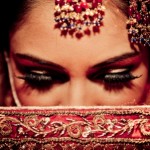Snober Beauty Tips
Source:- Google.com.pk
Henna is a small shrub native to West Asia and North Africa, called Lawsonia Inermis in Botanical terms. The leaves are picked, dried, and pulverized to a fine powder. It is a natural base for hair coloring and cosmetic use and an alternative to the chemical tints which may have side-effects. It has been in use in India for hundreds of years as a hair dye & conditioner.
When used for hair coloring, Henna plates and protects the hair shaft, allowing the color chosen to be reflected through the hair, while enhancing the natural color. Henna is also a conditioner.
Regular use of Henna texturizes hair, giving it body which becomes more evident on each application. “Neutral” Henna deposits no color on hair. It can be used as a conditioner once a month. It adds body and shine to fine, dull lifeless hair. Your hair color seems brighter because the hair has more shine. Henna has no lifting action, so the color you choose will depend on the natural or tinted hair color that you have.
Mehendi…
Mehendi originated in Egypt and in Middle Eastern countries during ancient times, and it was spread to India by the Muslims.
Since the twelfth century, Mehendi has been used all over India. Mehendi came into use because of its cooling therapeutic effect in a hot climate and, in India, it was also a way for a bride and groom to get to know one another before an arranged marriage.
Recently, Mehendi has become popularized in the West by musicians and Hollywood personalities and is now a quickly rising trend among women and men alike in world culture.
The art varies from country to country, spanning different cultures and religious traditions, and making it possible to recognize distinctions in cultural style. Other tribes or people that use Mehendi are: Arabs, Africans (North Africa), Asian and Middle Eastern.
Before the wedding the bride and many other women would gather together for a bonding ritual.
In this ritual the women would cover the bride’ hands and arms up to her elbows and feet and legs up to her knees in Mehendi designs.
After the wedding, while the Mehendi is still present on her body, the bride does not have to do any housework. Because women do such hard work as house wives in these countries, it is very important that the Mehendi stays for a long period of time. The decoration period can take up to five hours making the design very intricate and beautiful. The amount of time spent on the Mehendi is also used to teach the new bride patience. Arranged marriages were and are still often used in India and the Middle East. Because of this, the bride and groom aren’t usually familiar with each other.
The women hide the name of the groom in the bride’s Mehendi. Before the marriage the bride and groom meet to get to know each other better. To do this, the groom has to find his name in the bride’s Mehendi. This is also for good luck. If the groom finds his name in the bride’s Mehendi it is a sign that they will have a long and happy marriage. Mehendi contains magic. According to a nomadic Moroccan tribe called the Berbers, henna has been known in the East from ancient times to the present day for its power to protect, to bring luck and to provide material as well as spiritual wealth, most especially when used in ceremonies having to do with rites of passage.
In general, henna is thought of as a lucky charm or blessing. It wards off the evil eye, guards against black magic, harmful genies, and all other dangerous supernatural forces or entities.
Mehendi Ceremonies: Mehendi is used during these times to celebrate a very important event.
This ceremony can be strictly for the individual, for a family, or for a large number of people.
Cultural events and gatherings where Mehendi is used are: childbirth, a girl’s first menstrual period & weddings. These are extremely important events according to Middle Eastern and Indian cultures. Mehendi is very cooling: Mehendi art started because of a need to cool down under the hot sun.
The practice of Mehendi started out as a means of air-conditioning in the desert. Among its mystical and medicinal properties, the henna plant’s (Lawsonia Inermis is its botanical name) chief ability is to cool down the human body.
Eventually, they found one large dot in the palm of hand had the same effect. Other small dots were placed around it which gradually gave way to artistic designs. From this they decided to get extremely creative with extravagant lacy lines, flowers, and birds particularly peacocks.
Henna/Mehendi Enhances Beauty: Women will stain their nails, skin, and hair with henna.
Henna cosmetics are made from the Egyptian evergreen plant, Lawsonia inermis (henna).
There are four main types of Mehendi styles according to different cultures. Although Mehendi exists all over the East through different tribes and people, they each fall under one of these categories: Arabic, Indian, African (North Africa), and Asian and Middle Eastern. Arabic Mehendi features large, floral patterns on hands and feet, while Indian Mehendi uses fine line, lacy, floral and paisley patterns covering entire hands, forearms, feet and shins.










No comments:
Post a Comment